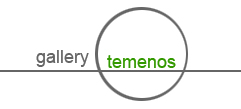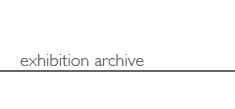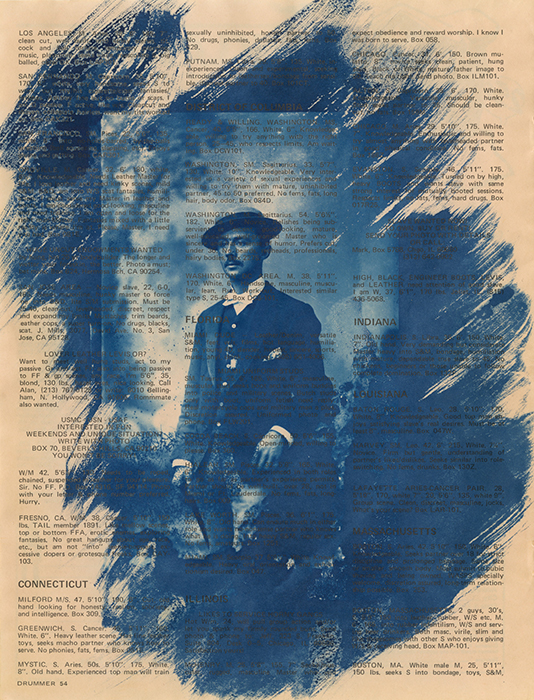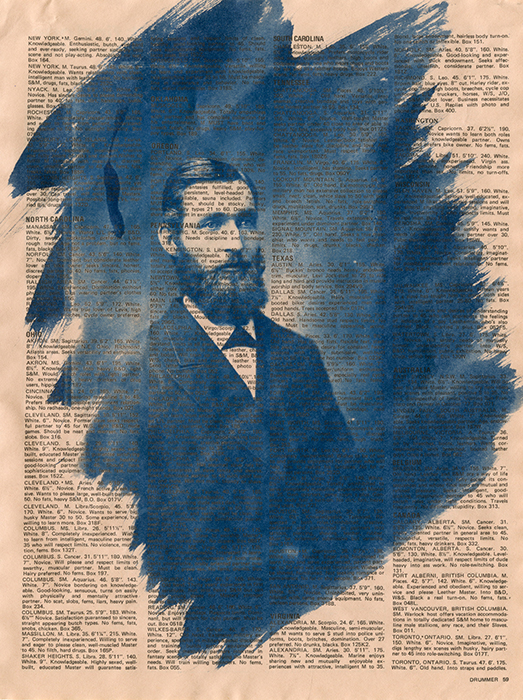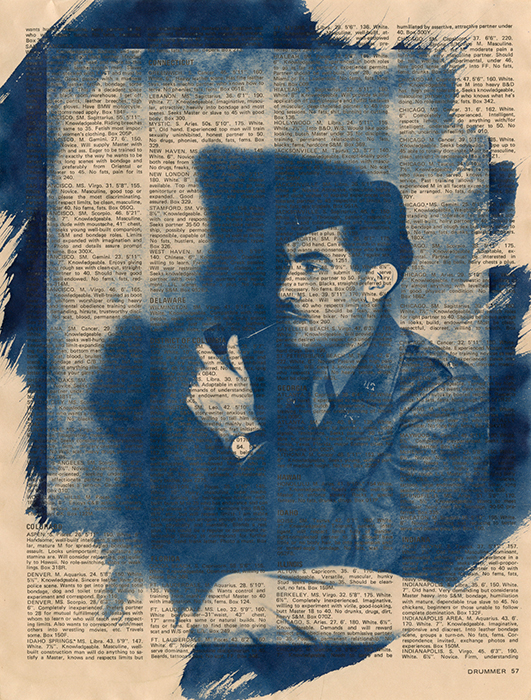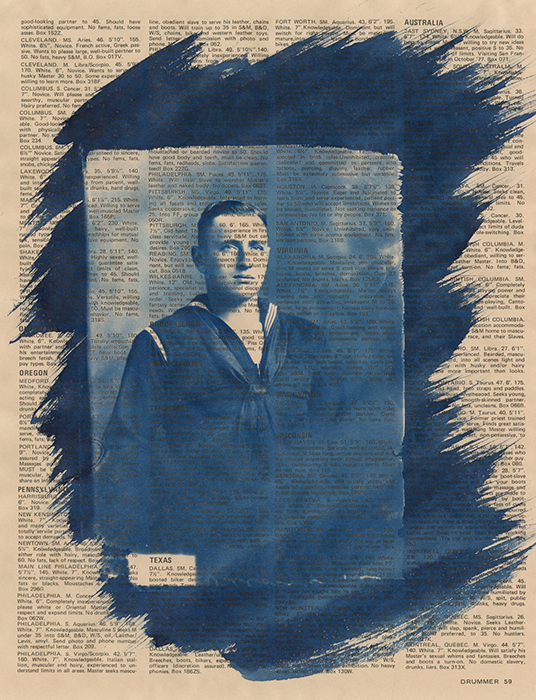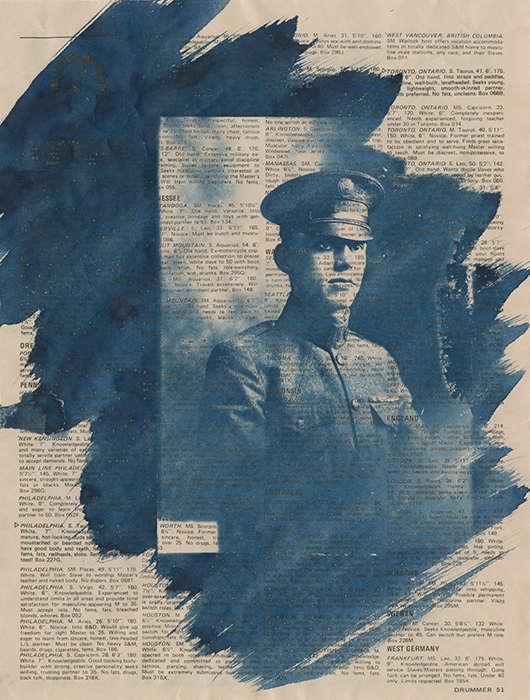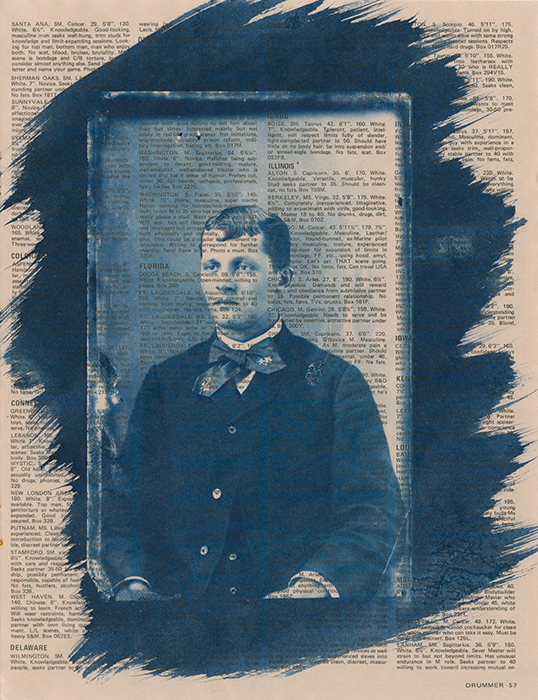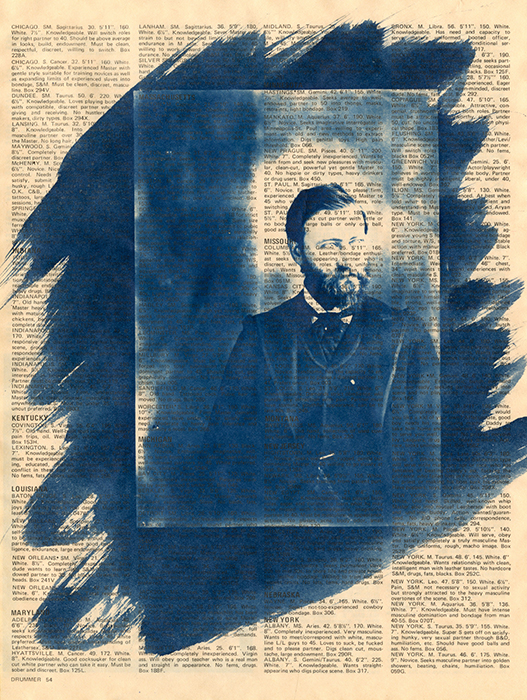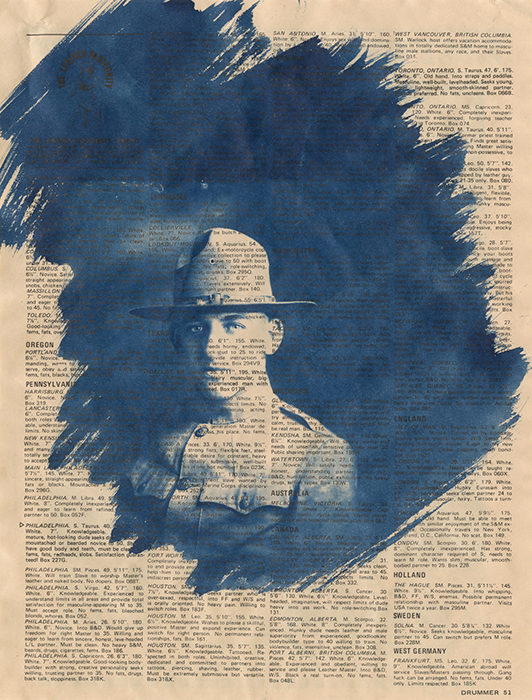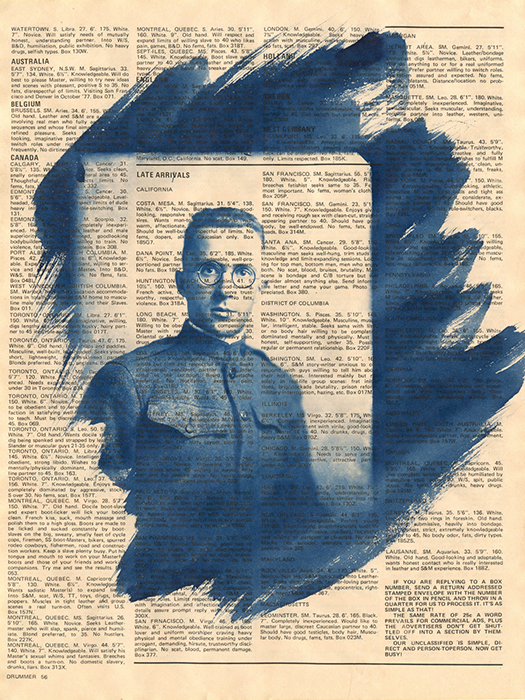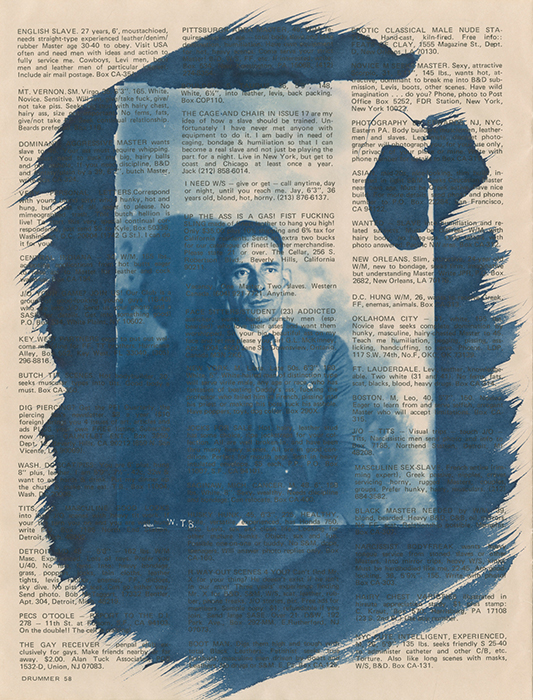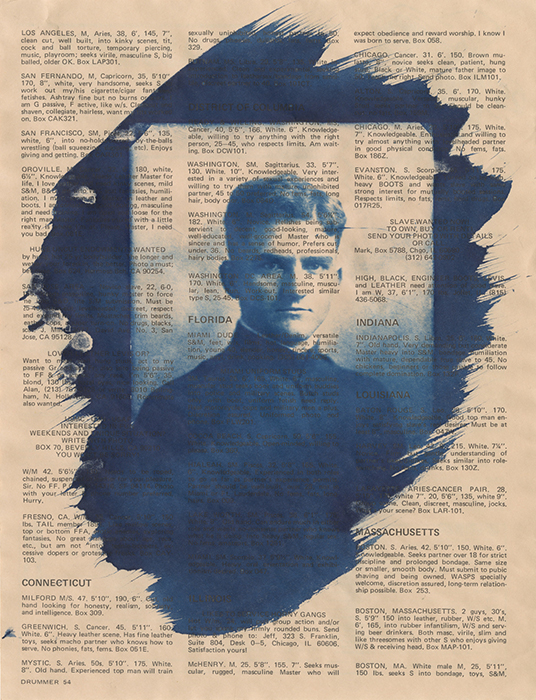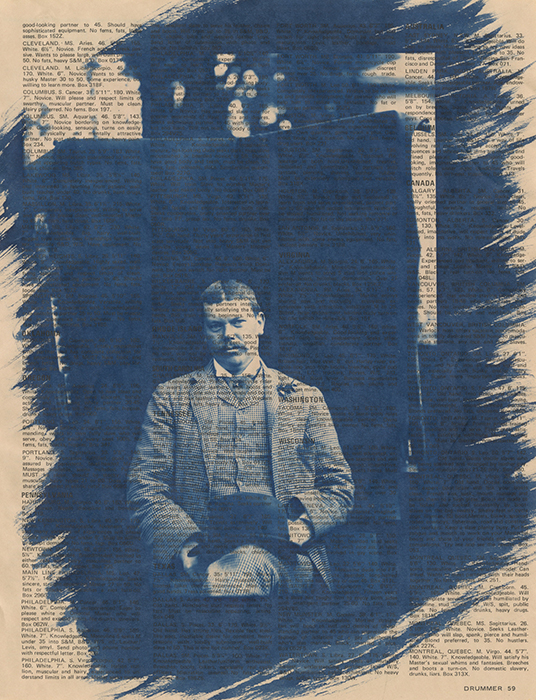As I began to be perceived by the world as a man, it felt strange to be seen as something I did not feel I understood. What it means to be a man has always felt slippery and strange, something I am separate from, observing and dissecting from afar. I collect photos of men, alone and together, looking for clues--- not only of how men of the past made sense of their own identities and relationships with each other, but also as potential mirrors that I hope might reflect back something about myself. Histories and Blue Boys is about this process of trial and error, and about how that search for self and sense of place has changed for others over time. When access to information was far less immediate, how did men learn what it means to be a man? How did they make sense of their feelings and desires, especially those they felt they had to hide, and how did they find community and connection? How has homophobia affected not only the relationships men have with one another, but how they understand themselves?
BLUE BOYS begins with collected glass negatives dating from the late 1800s through WWII, printed as cyanotypes on the 70s-era personals from Drummer Magazine, a magazine dedicated to the leather and BDSM gay subculture. This work creates a juxtaposition between an era of secrecy about sexual desire and the short window post-Stonewall but pre-AIDS where men interested in other men perceived greater sexual freedom. Blue Boys is a reference to the seminal gay magazine, Blue Boy, as well as the "blue discharges" that were given to homosexuals during WWII, the state of being "blue" as a descriptor of melancholy, and blue, the color of cyanotypes.

|
